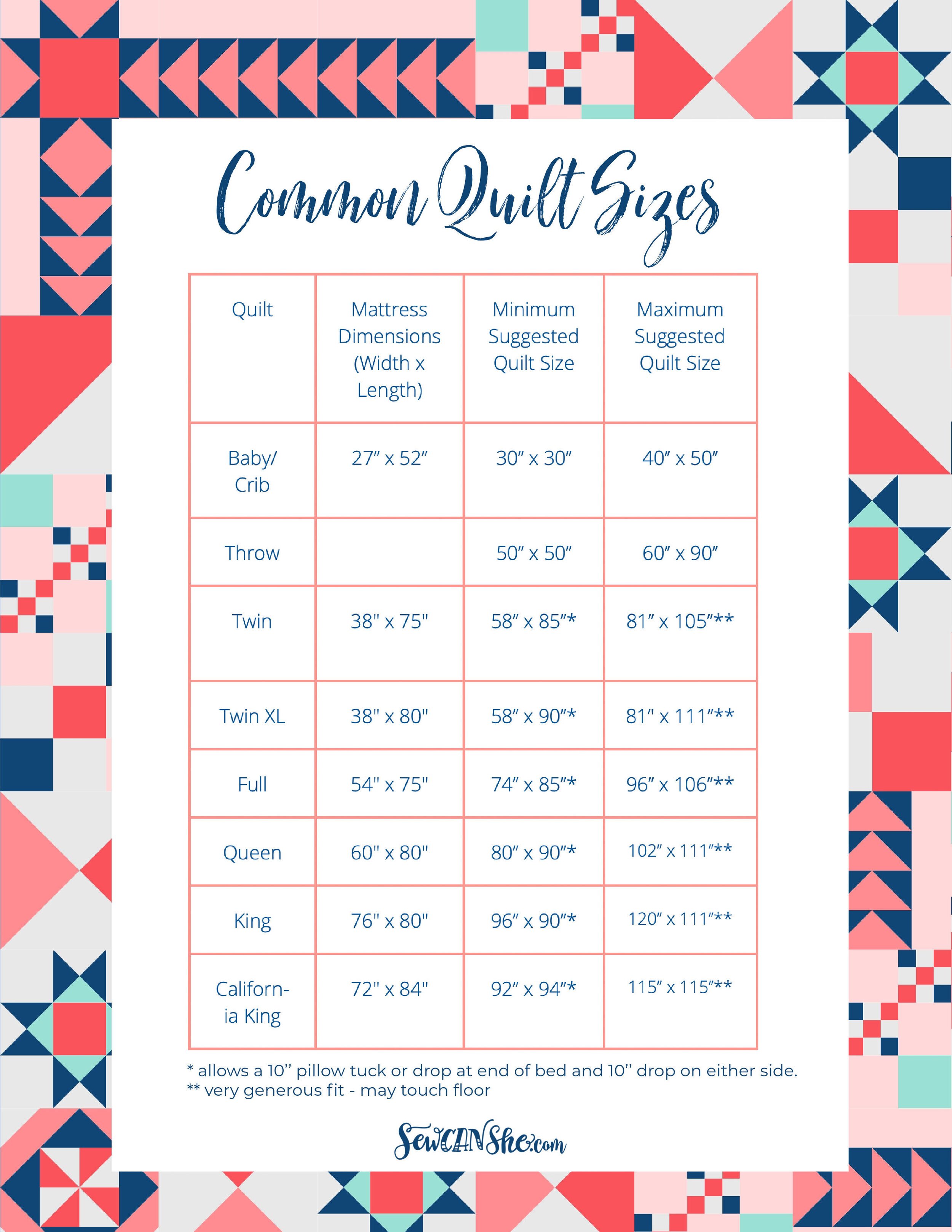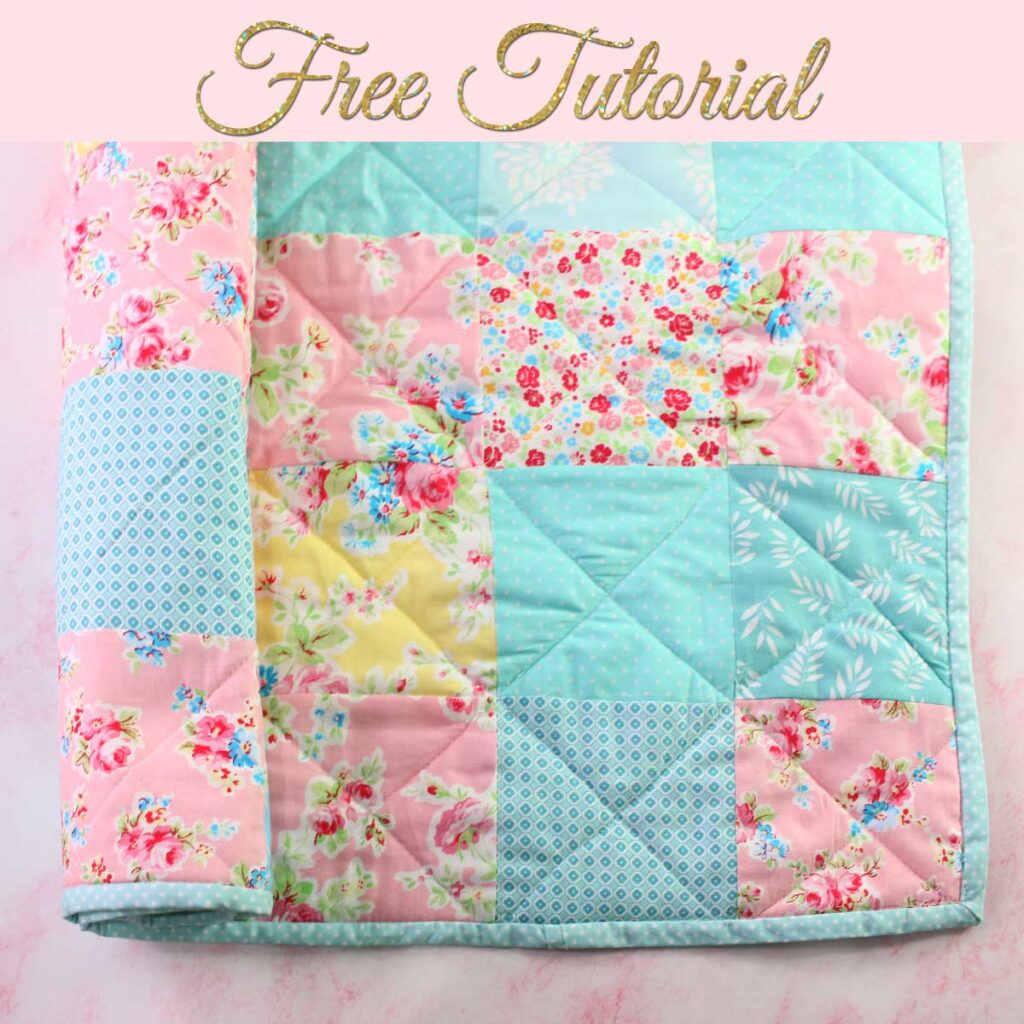Are you looking for the answer to the question: “What size should you get for a baby quilt?” Do you want to know what size is the perfect fit for a baby quilt? Look no further! In this article, we will provide you with all the information you need to select the best size for a baby quilt. From the standard sizes to custom-made quilts, this guide will help you choose the right size to ensure your new bundle of joy is kept safe and warm. Read on to find out more!
What Size Is a Baby Quilt?

What Is the Standard Size for a Baby Quilt?
The standard size for a baby quilt is 36 x 42 inches. However, some people may opt for larger quilts, such as 36 x 48 inches or even larger.
What Is the Measurement of a Finished Crib Quilt?
A finished crib quilt is typically measured at 40 x 60 inches. This size is perfect for a crib or toddler bed.
How Many Inches Is a Baby Quilt?
A baby quilt can range from 36 x 42 inches to 40 x 60 inches. The size of the quilt depends on the size of the bed and the preference of the quilt maker. The what size is crib quilt question can be answered by measuring the bed and then choosing the appropriate size for the quilt.
How Big Should a Little Boy Quilt Be?
A baby quilt should be the right size for a little boy’s crib. The size of the quilt should be determined by the size of the crib mattress. A 36 x 52 inch crib mattress is the standard size for most cribs, so a quilt that covers the mattress entirely should be no smaller than 36 x 52 inches.
What Size Square for 36 x 52 Crib Quilt?
The best size for a baby quilt is slightly larger than 36 x 52 inches. This allows for the quilt to fit over the mattress and hang over the sides for extra warmth and comfort. For a crib quilt, a square quilt measuring 38 x 58 inches is ideal. This size allows for 8-10 inches of overhang on all sides of the mattress, making the quilt a great fit for a little boy’s crib.
Frequently Asked Questions
What fabric is best for a baby quilt?
- Cotton: Cotton is a great choice for baby quilts since it is lightweight and soft, making it comfortable for baby’s delicate skin. It is also known to be durable and easy to clean, making it an ideal fabric for a baby quilt.
- Linen: Linen is a great fabric for a baby quilt due to its breathability. It is known to help regulate the temperature of baby’s body, making it perfect for the summer months. It is also wrinkle-resistant and can be machine-washed.
- Wool: Wool is a great fabric choice for a baby quilt due to its warmth and comfort. It is naturally hypoallergenic and flame-resistant, making it an ideal fabric for a baby quilt. It is also known to be durable and machine-washable.
- Fleece: Fleece is an excellent fabric choice for a baby quilt due to its softness and warmth. It is also lightweight and can be machine-washed and dried, making it an ideal fabric for a baby quilt.
How Long Should the Quilt Be?
A baby quilt should be approximately 36 inches by 36 inches. This size allows for plenty of room for wrapping and swaddling. It also allows for the quilt to be used for a variety of purposes such as a play mat, crib blanket, and stroller blanket. The quilt should be long enough to cover the baby’s feet and tuck in at the sides of the crib.
Are there any special safety considerations when making a baby quilt?
- Choose the right fabrics – Use fabrics that are made from natural fibers, such as cotton and wool, which are both soft and breathable. Avoid synthetic fabrics and any fabric that has been treated with harsh dyes or chemicals.
- Check for allergies – If the baby has any known allergies, make sure to use fabric that does not contain any of the allergens.
- Choose non-toxic threads – Ensure that the thread used to sew the quilt is non-toxic. Some threads may contain harmful chemicals that can irritate the baby’s skin.
- Avoid buttons or embellishments – Decorative buttons and other embellishments should be avoided as they can be a choking hazard.
- Check for sharp edges – Make sure that the quilt does not have any sharp edges that can cause injury to the baby.
What is the Difference Between a Baby Quilt and a Regular Quilt?
A baby quilt is generally smaller than a traditional quilt and made from lightweight materials like flannel or cotton. They can also be decorated with appliqué or embroidery, making them a special keepsake. Whereas a regular quilt is usually larger, made from heavier materials like wool, and often includes intricate piecing and quilting.
What type of batting should be used for a baby quilt?
- Cotton batting: Cotton batting is the most popular and commonly used batting for quilts, due to its breathability, softness and durability. It is a natural material, making it an ideal choice for baby quilts.
- Wool batting: Wool batting is a more expensive option but offers superior insulation and is highly durable, making it a great choice for cold winter months. It is also hypoallergenic, making it a good choice for sensitive skin.
- Polyester batting: Polyester batting is a synthetic material that offers good insulation and is easy to care for. It is also less expensive than other batting options, making it a good choice for those on a budget.
- Bamboo batting: Bamboo batting is a natural and eco-friendly option that is lightweight, breathable, and highly absorbent. It is also hypoallergenic, making it a good choice for babies with sensitive skin.
Conclusion
When choosing the size for a baby quilt, consider the size of the crib, the expected size of your baby, and the amount of fabric you have on hand. Generally, a baby quilt should measure between 36 inches and 48 inches square. This size is large enough to cover the entire mattress, while still being lightweight and easy to manage. Additionally, you can use the same quilt through the toddler years.
References
- Bryant, K. (2018). Baby Quilt Sizes: How to Determine the Best Size for Your Project. The Spruce Crafts.
- Peterson, C. (2020). What Size Should a Baby Quilt Be?. Quilting Daily.
- Wikipedia Contributors. (2020). Quilting. Wikipedia, The Free Encyclopedia.






